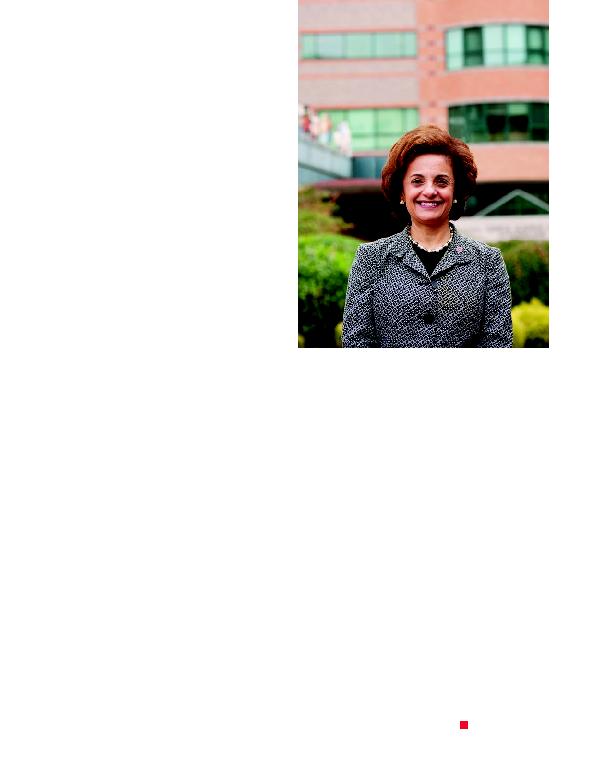
about interdisciplinary care coordination, and they would add
value to the team."
service learning. In her preliminary interviews, Dr. Gabriel
was struck by the school's longtime commitment to the Eric
B. Chandler Health Center. Most medical students do at least
one rotation at the clinic, allowing them to observe and
appreciate the value of multidisciplinary care teams.
professional experience at Mayo," says Dr. Gabriel. "But here
it is very strong, and we need to sustain it, so that it can con-
tinue to be a strength."
to Understanding Rheumatic Diseases
dent spurred her interest in pursuing a career in rheuma-
to elucidate an understanding of the rheumatic diseases: their
risk factors, determinants, and outcomes, including their eco-
nomic impact. Why, she hoped to learn, is rheumatoid arthri-
tis five times more prevalent in women than in men, and why
does the disease so often run in families?
her research on the risks of connective tissue diseases among
women with breast implants. Her work has advanced medical
knowledge about the comorbidities of the rheumatic diseases,
most recently the high risk of cardiovascular disease among
people with rheumatoid arthritis.
Award, the Hench Award for Rheumatology Research at the
Mayo Clinic, and a Mayo Foundation Scholarship. Her high-
ly successful research program was funded for nearly 20 years
by the National Institutes of Health and has led to more than
250 peer-reviewed articles in scientific publications. In addi-
tion, she serves as coeditor of Kelley's Textbook of Rheuma-
tology, the premier global text in the field.
named a McCann Scholar by the Joy McCann Foundation, for
excellence in mentoring in science and medicine.
PCORI was created by the Patient Protection and Affordable
Care Act of 2010, and she was chosen as its first chair. She has
served on many other governmental committees and advisory
boards, including the Drug Safety and Risk Management
Advisory Committee of the U.S. Food and Drug Administration
and an advisory council of the National Institute of Arthritis
and Musculoskeletal and Skin Diseases.
vision for health care: "The best interest of the patient is the
the benefit of advancing knowledge, union of forces is necessary."
medical school itself, to its partners in Rutgers Biomedical and
Health Sciences, to Rutgers University, to health-related institu-
tions throughout New Jersey, the forces exist to build a clinical-
ly integrated, statewide, high-value health care delivery system.
nity to serve as dean of Robert Wood Johnson Medical School.
It promises to be the "real-world experience" that she seeks.
Her own proven strengths as an innovative academic leader
suggest that, under her leadership, the medical school will be
a major force in this pioneering effort.